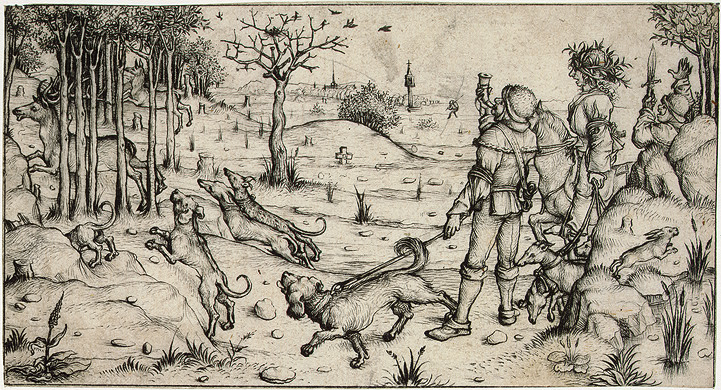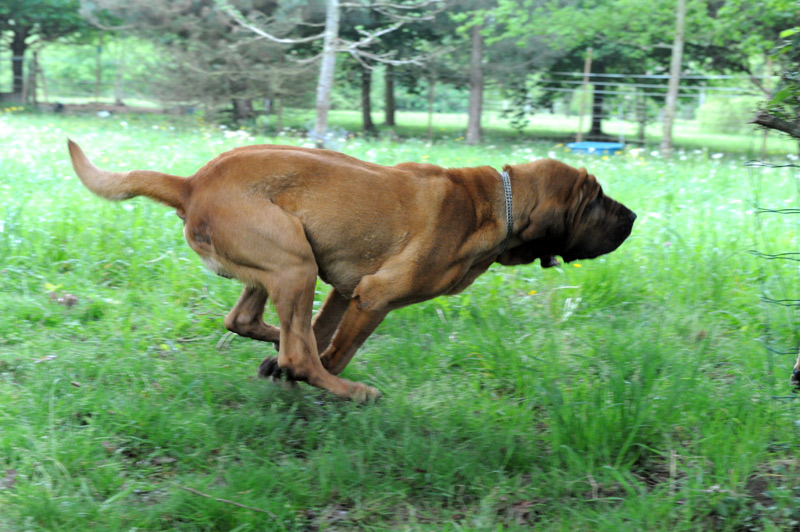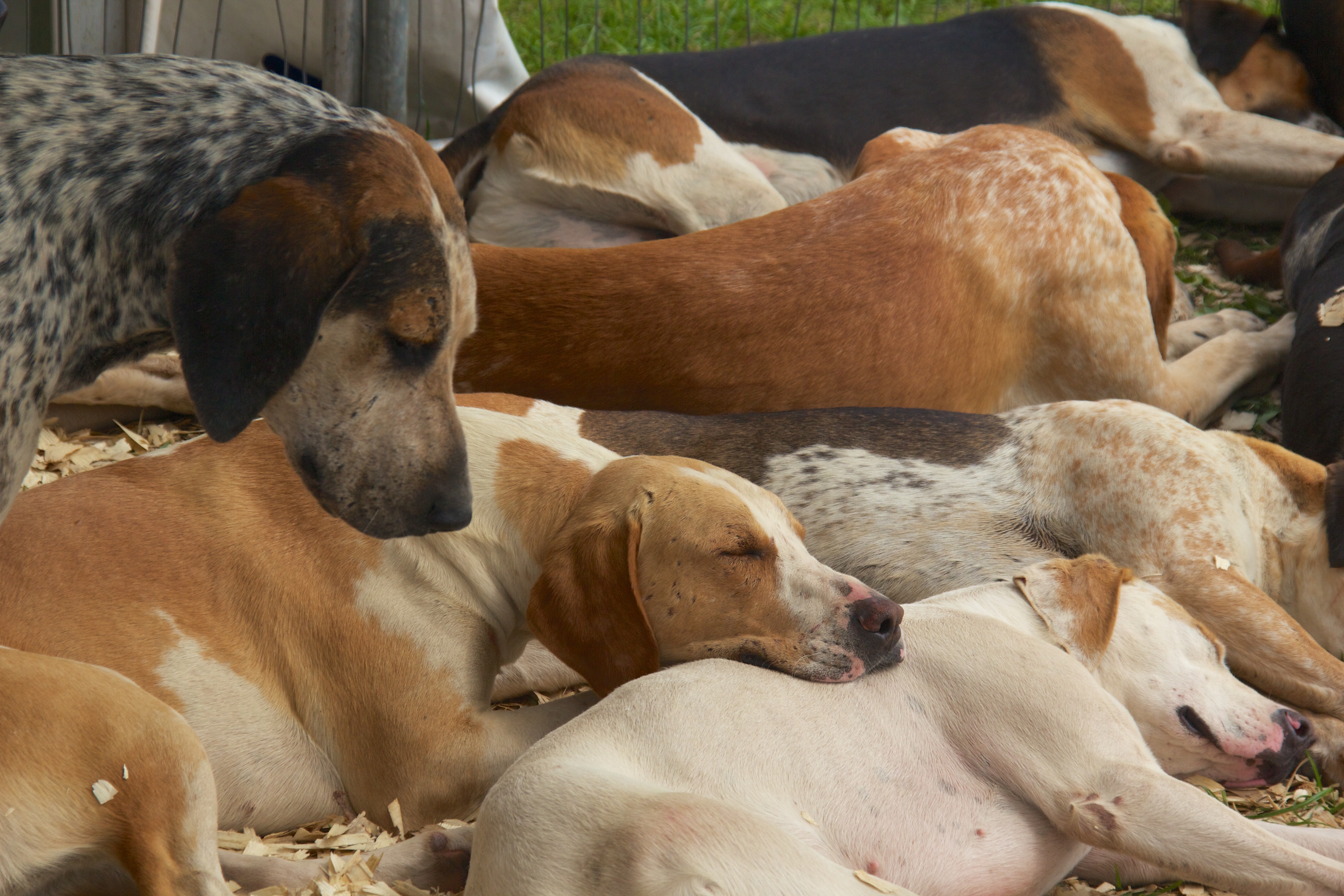|
Rache
Rache , also spelled racch, rach, and ratch, from Old English ''ræcc'', linked to Old Norse ''rakkí'', is an obsolete name for a type of hunting dog used in Great Britain in the Middle Ages. It was a scenthound used in a pack to run down and kill game, or bring it to bay. The word appears before the Norman Conquest. It was sometimes confused with 'brache', (also 'bratchet') which is a French derived word for a female scenthound. In medieval hunting in England and Northern Europe, pursuit of the hart or wild boar involved using a ' limer' or 'lyam hound' (a hound handled on a leash or 'lyam') to trace the animal from its footprints or droppings to where it was browsing or lying up. This became known as 'harbouring' the animal. When this had been done, the huntsman reported back to his lord, who then brought the pack of raches to chase it down on its hot scent when it had been unharboured, 'rowsed' or 'upreared'. Sometimes, pairs of raches were held at strategic points along wh ... [...More Info...] [...Related Items...] OR: [Wikipedia] [Google] [Baidu] |
Rache Historiae Animalium
Rache , also spelled racch, rach, and ratch, from Old English ''ræcc'', linked to Old Norse ''rakkí'', is an obsolete name for a type of hunting dog used in Great Britain in the Middle Ages. It was a scenthound used in a pack to run down and kill game, or bring it to bay. The word appears before the Norman Conquest. It was sometimes confused with 'brache', (also 'bratchet') which is a French derived word for a female scenthound. In medieval hunting in England and Northern Europe, pursuit of the hart or wild boar involved using a ' limer' or 'lyam hound' (a hound handled on a leash or 'lyam') to trace the animal from its footprints or droppings to where it was browsing or lying up. This became known as 'harbouring' the animal. When this had been done, the huntsman reported back to his lord, who then brought the pack of raches to chase it down on its hot scent when it had been unharboured, 'rowsed' or 'upreared'. Sometimes, pairs of raches were held at strategic points along where ... [...More Info...] [...Related Items...] OR: [Wikipedia] [Google] [Baidu] |
Limer
A limer, or lymer , was a kind of dog, a scenthound, used on a leash in medieval times to find large game before it was hunted down by the pack. It was sometimes known as a lyam hound/dog or lime-hound, from the Middle English word ''lyam'', meaning 'leash'. The French cognate ''limier'' has sometimes been used for the dogs in English as well. The type is not to be confused with the bandog, which was also a dog controlled by a leash, typically a chain, but was a watchdog or guard dog. Use In medieval hunting in France and England, certain kinds of game were not found and hunted with a full pack, as usual in modern hunting. Instead, they were first found by a limer. The limer would be taken out at dawn by its handler, on foot, who would identify, perhaps from droppings, perhaps from footprints, where a large animal had passed during the night. He would set his hound on the trail, until it had found where the animal was browsing or at rest. This required keen scenting, the abili ... [...More Info...] [...Related Items...] OR: [Wikipedia] [Google] [Baidu] |
Sleuth Hound
The sleuth hound (, from Old Norse ''slóð'' "track, trail" + hound) was a breed of dog. Broadly, it was a Scottish term for what in England was called the Bloodhound, although it seems that there were slight differences between them. It was also referred to as a 'slough dog', (or 'slewe dogge'), and a 'slow hound', the first word probably representing a mispronunciation of 'slough' rather than a reference to the speed of the hound. The sleuth hound first appears in poems about the Scottish patriots Robert the Bruce and William Wallace. These poems depict their heroes tracked by sleuth hounds. Bruce escapes by crossing water, and Wallace by killing one of his party, whom he suspects of treachery, and leaving the corpse to distract the hound. The poems are romances, not histories, but there is no implausibility about the use of sleuth hounds. John Barbour, who wrote ''The Bruce'', was born before his hero died, and the year in which the Bruce was supposedly pursued was 1307. Th ... [...More Info...] [...Related Items...] OR: [Wikipedia] [Google] [Baidu] |
Old English
Old English (, ), or Anglo-Saxon, is the earliest recorded form of the English language, spoken in England and southern and eastern Scotland in the early Middle Ages In the history of Europe, the Middle Ages or medieval period lasted approximately from the late 5th to the late 15th centuries, similar to the post-classical period of global history. It began with the fall of the Western Roman Empire .... It was brought to Great Britain by Anglo-Saxon settlement of Britain, Anglo-Saxon settlers in the mid-5th century, and the first Old English literature, Old English literary works date from the mid-7th century. After the Norman conquest of 1066, English was replaced, for a time, by Anglo-Norman language, Anglo-Norman (a langues d'oïl, relative of French) as the language of the upper classes. This is regarded as marking the end of the Old English era, since during this period the English language was heavily influenced by Anglo-Norman, developing into a phase know ... [...More Info...] [...Related Items...] OR: [Wikipedia] [Google] [Baidu] |
Dog Type
Dog types are broad categories of domestic dogs based on form, function, or style of work, lineage, or appearance. Some may be locally adapted dog types (or '' landraces'') that may have the visual characteristics of a modern purebred dog. In contrast, modern '' dog breeds'' strictly adhere to long-established breed standards, that began with documented foundation breeding stock sharing a common set of inheritable characteristics, developed by long-established, reputable kennel clubs that recognize the dog as a purebred. A "dog type" can be referred to broadly, as in gun dog, or more specifically, as in spaniel. Dogs raised and trained for a specific working ability rather than appearance may not closely resemble other dogs doing the same work, or any of the dogs of the analogous breed group of purebred dogs. Names in English The earliest books in the English language to mention numbers of dog types are from the "Cynegetica" (hunting literature), namely, ''The Art of Vene ... [...More Info...] [...Related Items...] OR: [Wikipedia] [Google] [Baidu] |
Bloodhound
The bloodhound is a large scent hound, originally bred for hunting deer, wild boar and, since the Middle Ages, for tracking people. Believed to be descended from hounds once kept at the Abbey of Saint-Hubert, Belgium, in French it is called, ''le chien de Saint-Hubert''. This breed is famed for its ability to discern human scent over great distances, even days later. Its extraordinarily keen sense of smell is combined with a strong and tenacious tracking instinct, producing the ideal scent hound, and it is used by police and law enforcement all over the world to track escaped prisoners, missing people, and lost pets. Appearance Bloodhounds weigh from 36 to 72 kg (80 to 160 lbs). They are 58 to 69 cm (23 to 27 inches) tall at the withers. According to the AKC standard for the breed, larger dogs are preferred by conformation judges. Acceptable colors for bloodhounds are black, liver, and red. Bloodhounds possess an unusually large skeletal structur ... [...More Info...] [...Related Items...] OR: [Wikipedia] [Google] [Baidu] |
Medieval Hunting
Throughout Western Europe in the Middle Ages, humans hunted wild animals. While game was at times an important source of food, it was rarely the principal source of nutrition. All classes engaged in hunting, but by the High Middle Ages, the necessity of hunting was transformed into a stylized pastime of the aristocracy. More than a pastime, it was an important arena for social interaction, essential training for war, and a privilege and measurement of nobility. History Hieratic formalized recreational hunting has taken place since Assyrian kings hunted lions from chariots in a demonstration of their royal nature. In Roman law, property included the right to hunt, a concept which continued under the Frankish Merovingian and Carolingian monarchs who considered the entire kingdom to be their property, but who also controlled enormous royal domains as hunting reserves (''forests''). The biography of the Merovingian noble Saint Hubert (died 727/728) recounts how hunting could become ... [...More Info...] [...Related Items...] OR: [Wikipedia] [Google] [Baidu] |
Hart (deer)
A hart is a male red deer, synonymous with '' stag'' and used in contrast to the female hind; its use may now be considered mostly poetic or archaic. The word comes from Middle English ''hert'', from Old English ''heorot''; compare Frisian ''hart'', Dutch ''hert'', German ''Hirsch'', and Swedish, Norwegian, and Danish ''hjort'', all meaning "deer". Heorot is given as the name of Hrothgar's mead hall in the Old English epic ''Beowulf''. Historically, ''hart'' has also been used generically to mean "deer, antelope", as in the royal antelope, which Willem Bosman called "the king of the harts". The word ''hart'' was also sometimes used in the past specifically to describe a stag of more than five years. In deer classification In medieval hunting terms, a stag in its first year was called a "calf" or "calfe", in its second a "brocket", in its third a "spayed", "spade", or "spayard", in its fourth a "staggerd" or "staggard", and in its fifth a "stag", or a "great stag". To be a ... [...More Info...] [...Related Items...] OR: [Wikipedia] [Google] [Baidu] |
Southern Hound
The Southern Hound was a breed of dog that existed in Britain probably until sometime in the 19th century, now extinct. The exact date of its extinction is not known; it is likely that it was gradually interbred with other breeds until the genuine Southern Hound bloodline ceased to exist. Origins The origins of the Southern Hound are equally unclear. Most writers suggest that it is derived from the Talbot, which was a predominantly white, slow, deep-throated, scent hound, also of uncertain origin, though it is sometimes claimed that it came from Normandy. It is suggested that at some point the Talbot was crossed with Greyhounds to give them an extra turn of speed. However, in ''The Dog'' published in 1852, William Youatt states that the Southern Hound may have existed in Britain since ancient times rather than being brought from France by the Normans.Youatt p.133 Description The Southern Hound was a tall, heavy dog with a square head, and long ears. It had a deep chest, a lo ... [...More Info...] [...Related Items...] OR: [Wikipedia] [Google] [Baidu] |
John Bellenden
John Bellenden or Ballantyne ( 1533–1587?) of Moray (why Moray, a lowland family) was a Scottish writer of the 16th century. Life He was born towards the close of the 15th century, and educated at St. Andrews and Paris. At the request of James V he translated Hector Boece's ''Historia Gentis Scotorum''. This translation, ''Croniklis of Scotland'' is a very free one, with a good deal of matter not in the original, so that it may be almost considered as a new work. It was published in 1536 in Edinburgh by Thomas Davidson. In 1533, Bellenden also translated the first five books of Livy's ''History of Rome''. These remain the earliest existing specimena of Scottish literary prose, and remarkable specimena they are, for the execution of which he enjoyed the Royal favour, and was made Archdeacon of Moray. Both the ''Croniklis'' and the ''Livy'' are prefaced by poems, the Proheme of the Chronicles, 'Quehen Silver Diane', being more often anthologised. Another work, the ''Bann ... [...More Info...] [...Related Items...] OR: [Wikipedia] [Google] [Baidu] |
North Country Beagle
The North Country Beagle, Northern Hound or Northern Beagle was a breed of dog that existed in Britain probably until early in the 19th century. The exact date of its extinction is not known; it is likely that it was gradually interbred with other breeds, particularly the modern Beagle, until the genuine North Country Beagle bloodline ceased to exist. The origins of the North Country Beagle are equally unclear. Most writers suggest that it was developed from the Talbot, whose origins are also uncertain, but which some have claimed originated in Normandy. The Talbot was a predominantly white, slow, deep-throated scent hound. At some point the Talbots were crossed with Greyhounds to give them an extra turn of speed, but they remained comparatively slow dogs that relied more on their nose than speed in the chase. The North Country Beagle was a large, bony hound with a square head and long trailing ears. Chiefly bred in Yorkshire, it was common in the north of England, but below the ... [...More Info...] [...Related Items...] OR: [Wikipedia] [Google] [Baidu] |
English Foxhound
The English Foxhound is one of the four foxhound breeds of dog. It is a cousin of the American Foxhound. They are scent hounds, bred to hunt foxes by scent. Description Appearance The breed standards' guidelines for showing English Foxhounds requires them to be tall at the withers. The skull is thick and the muzzle is long. The legs are muscular, straight-boned, and the paws are rounded, almost cat-like. The English Foxhound comes in any hound color, most often tricolor, tan, red, or black with a white base. Temperament The English Foxhound is a pack hound, therefore, it gets along well with other dogs and enjoys human companionship. It gets along with horses, children, and other pets, as it is a gentle, social, and tolerant breed. It is an active breed that enjoys tracking foxes and has the stamina to run all day with few breaks. Health and lifespan There are very few health problems in this breed. Occasionally seen are chronic hip dysplasia, renal disease, ... [...More Info...] [...Related Items...] OR: [Wikipedia] [Google] [Baidu] |







.jpg)
